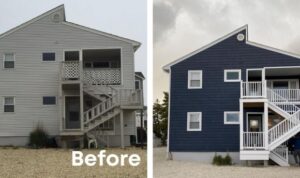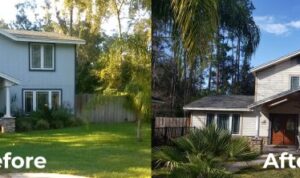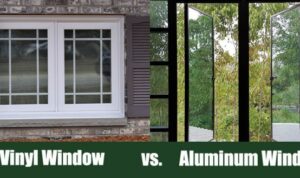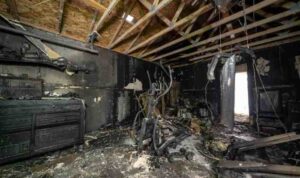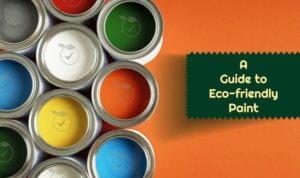As homeowners, ensuring our living spaces are protected from water damage is crucial. In this guide, we dive into the world of home waterproofing solutions, exploring different types, common causes of water seepage, the importance of waterproofing basements and crawl spaces, and the debate between DIY and professional services.
Join us on this informative journey to safeguard your home from potential water-related issues.
Types of Home Waterproofing Solutions
When it comes to protecting your home from water damage, there are various types of waterproofing solutions available. These solutions can be categorized into interior and exterior methods, each with its own set of benefits and drawbacks.
Interior Waterproofing Solutions
- Interior Sealants: These are coatings applied to the interior walls to prevent water infiltration.
- Interior Drainage Systems: These systems collect and redirect water away from the foundation.
- Sump Pump Installation: Sump pumps help to remove excess water from basements or crawl spaces.
Exterior Waterproofing Solutions
- Exterior Sealants: These are applied to the exterior walls to create a waterproof barrier.
- Exterior Drainage Systems: These systems help to divert water away from the foundation and prevent seepage.
- French Drains: French drains are trenches filled with gravel or rock that allow water to flow away from the foundation.
When comparing interior and exterior waterproofing methods, exterior solutions are generally considered more effective in preventing water damage to the foundation of a home. Exterior waterproofing creates a barrier that stops water from reaching the foundation walls, whereas interior methods are more focused on managing water that has already infiltrated.
However, interior waterproofing solutions can be more cost-effective and less disruptive to install compared to exterior methods. Interior solutions are also easier to access for maintenance and repairs. On the other hand, exterior solutions provide a more comprehensive protection against water intrusion and can increase the overall value of the property.
Common Causes of Water Seepage in Homes
Water seepage in homes can be caused by various factors that are often overlooked. Understanding these common sources of water infiltration is crucial in preventing potential damage to your property.
Poor Drainage
Poor drainage around your home can lead to water accumulating near the foundation. This excess water can seep into basements or crawl spaces, causing dampness and mold growth over time.
Cracks in Walls or Foundation
Small cracks in walls or foundation can serve as entry points for water to seep into your home. These cracks can widen over time, especially during freeze-thaw cycles, leading to more significant water infiltration.
Foundation Issues
If your home's foundation is not properly sealed or has structural issues, water can easily find its way inside. Cracks, gaps, or porous materials in the foundation can allow water to seep through, causing damage to the interior of your home.
Importance of Waterproofing Basements and Crawl Spaces

Waterproofing basements and crawl spaces is crucial for maintaining a healthy home environment. These areas are prone to moisture seepage, which can lead to mold growth, musty odors, and structural damage if left untreated.
Preventing Mold Growth and Structural Damage
Waterproofing these areas effectively prevents moisture from seeping in, creating a damp environment perfect for mold growth. Mold not only poses health risks but can also weaken the structure of your home over time.
Tips for Waterproofing Basements and Crawl Spaces
- Ensure proper drainage around the foundation of your home to divert water away from the basement and crawl space.
- Seal any cracks or gaps in the walls and floors to prevent water infiltration.
- Consider installing a sump pump to remove excess water and prevent flooding.
- Use waterproofing coatings or membranes on the walls and floors to create a barrier against moisture.
- Maintain proper ventilation to reduce humidity levels and prevent condensation.
DIY vs. Professional Waterproofing Services
When it comes to waterproofing your home, you have the option to either tackle the project yourself or hire professional waterproofing services. Both options have their advantages and disadvantages depending on the complexity of the job and your skill level.
DIY Waterproofing Solutions
DIY waterproofing projects can be cost-effective and give you a sense of accomplishment. They are suitable for minor leaks or dampness that can be easily addressed with simple solutions like sealants or waterproofing paints.
- Advantages:
- Cost-effective
- You can work at your own pace
- Opportunity to learn new skills
- Disadvantages:
- May not be as effective for major water seepage issues
- Requires time and effort
- Potential for mistakes if not done correctly
Professional Waterproofing Services
For more serious water seepage problems or structural issues, hiring professional waterproofing services is recommended. Professionals have the expertise, tools, and experience to ensure a thorough and long-lasting solution.
- Advantages:
- Professional assessment and diagnosis of the problem
- Use of specialized equipment and materials
- Guarantees on workmanship
- Disadvantages:
- Higher cost compared to DIY solutions
- Less control over the timeline of the project
- Dependence on external service providers
Tips for DIY Waterproofing Projects
If you decide to go the DIY route for waterproofing, here are some tips to help you achieve successful outcomes:
- Thoroughly inspect the area for leaks and determine the root cause of the problem.
- Choose high-quality waterproofing products that are suitable for the specific area you are working on.
- Follow manufacturer instructions carefully and ensure proper application of sealants or coatings.
- Monitor the area after waterproofing to check for any signs of recurring leaks or moisture.
- If in doubt or if the problem persists, don't hesitate to seek professional help.
Wrap-Up
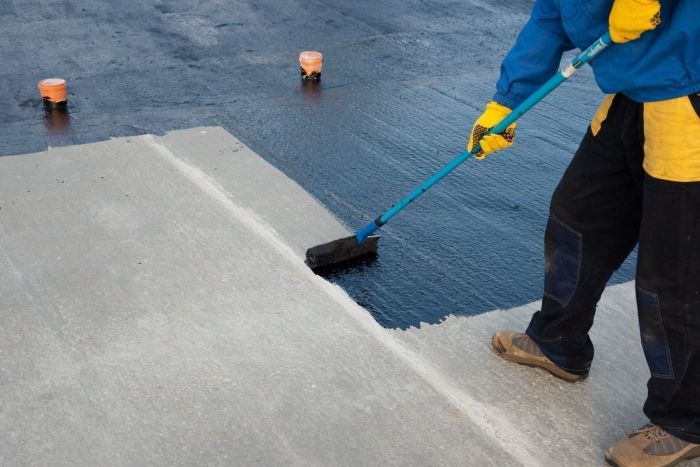
In conclusion, understanding the various aspects of home waterproofing solutions empowers homeowners to make informed decisions to protect their properties. By taking proactive steps to prevent water seepage and damage, you can ensure a safe and secure living environment for you and your family.
Clarifying Questions
What are the different types of home waterproofing solutions?
There are various types, including interior sealants, exterior waterproofing membranes, and drainage systems.
When should I consider hiring professional waterproofing services?
Professional services are recommended for complex issues or when extensive waterproofing is needed.
How can water seepage in homes lead to water damage?
Water seepage can cause structural damage, mold growth, and compromise the integrity of your home.

